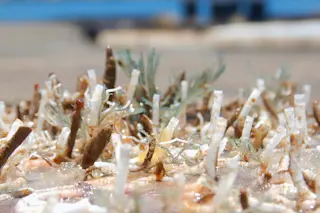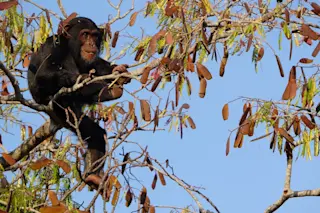Pity the poor tubeworm, whose life is fraught with risk. Like many marine invertebrates, the worm spends its earliest days as a tiny larva drifting in the plankton — but sooner or later, it must choose a place to settle down. Once cemented to a hard surface, it begins the massive shape change called metamorphosis, from which it emerges in its splendorous adult form.
There are no second chances: A worm that picks a bad spot can’t try again. Faced with such a momentous decision — the most important of its life — the larva needs all the help it can get. Often, that help comes from another kingdom of life altogether.
Scientists have known for several decades that some animal larvae, including those of tubeworms, select sites for metamorphosis by monitoring chemical signals released by bacteria. But they’re just beginning to realize how widespread the relationship can be, and ...














